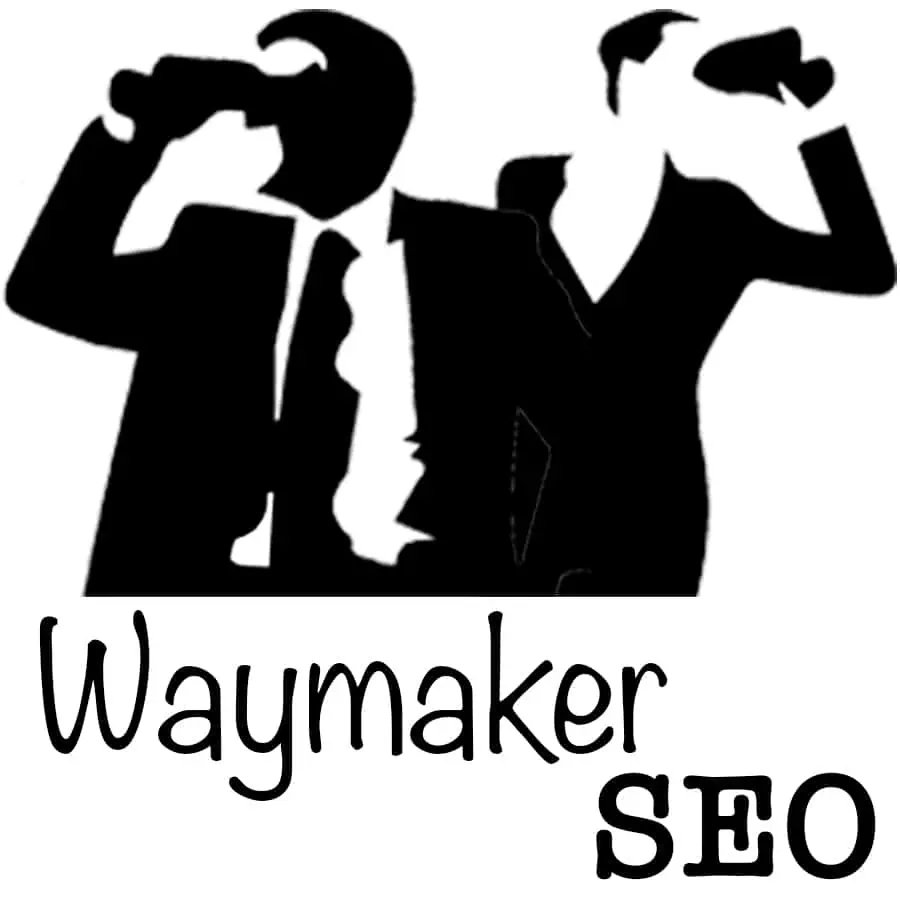Target Customer & Client
Who is your target customer?

When starting marketing efforts, the questions that always need to be asked are "Who is your target customer" and "Who is your ideal client?" These are two different questions. I'll cover the first question in the context of Search Engine Optimization (SEO).
To start, SEO Framework and Target Customer Overview
SEO is an advanced marketing strategy. To do SEO, you need to have several marketing components in place. One of the key elements is understanding what it is you are selling and to whom. The "whom" trips up a lot of clients because the assumption is the answer is the "people who need my product/service" or, more commonly, "anyone". When asked how to reach these target markets, they assume marketing channels will get them the people they need. Marketing channels can get you access to your target audience, but they also have other non-customers in the mix. With SEO, if you understand who your target customer is and what it is they are looking for (or searching for), then you can optimize your site to be found for those words.
This is where those doing SEO need to understand the target customer. Knowing this is good for SEO and a key component of your business.
Identifying your target customer is a crucial step in building a successful business. It helps you focus your marketing efforts and resources, ensures that you're offering the right products or services to the right people, and can ultimately lead to increased sales and profitability.
Here are some keys steps to help you identify your target customer:
- Define your ideal customer: Start by creating a detailed profile of your ideal customer. This should include demographic information (age, gender, location, income, etc.), as well as psychographic information (interests, values, lifestyle, etc.). Consider factors such as their pain points and challenges, as well as their goals and aspirations.
- Conduct market research: Once you have a clear picture of your ideal customer, conduct market research to validate your assumptions and learn more about their needs and preferences. This can include surveys, focus groups, or online research.
- Analyze your competitors: Look at what your competitors are doing and who they're targeting. Are they focusing on the same customer demographic as you? If so, how can you differentiate yourself and offer something unique?
- Evaluate your product or service: Consider whether your product or service is a good fit for your target customer. Does it solve their problems or address their needs? If not, how can you adjust your offering to better meet their needs?
- Refine your marketing strategy: Once you've identified your target customer, refine your marketing strategy to focus on reaching and engaging with that audience. This can include targeting your advertising and social media efforts, optimizing your website for your target customer, and developing messaging that speaks directly to their needs and concerns.
It's About Focus
By thinking through who your target customer is, you can focus your marketing efforts on a crowd of people already interested in your products or services. This allows you to save time and money from marketing to people who may never buy what you are selling.
It's about Speaking Directly to your Potential Customer
When you identify your target customer and think through why they need to buy your product/service, what objections they may have, or any other details about them, you can create messaging that speaks right to the heart of the customer.
So in the example below, you can see that an interior designer can create a message specifically for restaurant owners to speak about how an interior designer can help you have a great aesthetic and help them optimize space within the existing layout.
Here is an example Target Customer Matrix for Interiors Designers
| Customer Types | Reasons to Hire an Interior Designer | Objections to Hiring an Interior Designer | Ways to Overcome Objections |
| Homeowners | Improve the aesthetics of their home | Cost | Explain the value of hiring an interior designer and offer flexible pricing options. |
| Real Estate Investors | Increase the value of their property | Lack of trust in the designer's ability | Show a portfolio of successful projects and offer testimonials or references from satisfied clients. |
| Small Business Owners | Create a visually appealing storefront | Budget constraints | Offer cost-effective design solutions and explain how good design can lead to increased revenue. |
| Corporate Offices | Improve employee productivity | Disruption of work during the renovation | Develop a plan to minimize disruption and work around employees' schedules |
| Restaurants | Enhance the dining experience | Limited space or layout constraints | Offer creative solutions to optimize the space and work within the existing layout. |
| Event Planners | Create a cohesive event design | Limited budget | Offer design options within the budget and explain the impact of good design on the event's success. |
| Vacation Rental Owners | Increase bookings and rental income | Lack of knowledge of local design trends | Offer expertise on local design trends and demonstrate the impact on rental income. |
| Architects | Complement their building design | Fear of clashing design styles | Collaborate with the architect to create a cohesive design that complements the building. |
| Home Builders | Assist in material and color selection | The belief that they can handle it on their own | Offer expert advice on color and material selection and explain how good design can add value to the home. |
| Art Galleries | Create a dynamic exhibition space | Limited budget or space constraints | Offer creative solutions to optimize the space and work within the existing constraints. |
Want a Free Customer Matrix?
If you read this article and want a free customer matrix, I will create one for you. All I ask is that you join our newsletter. You'll get monthly tips, updates on new blogs, and more.
Target Customer and SEO, the Tie in
So how does this all tie into SEO?
Easy. Now that we know who you are targeting and what selling point you can hook them on, we can start to do keyword research and create copy that utilizes this information.
Let's use the Target Customer "Restaurants" and the need for optimizing space.
I looked up "Interior Design Restaurant" in a keyword planner. There are 496 variations of the keyword. Here are the Top 10 (based on search volume)
| Keyword |
# of Searches |
Expected Visits |
Competition |
Cost Per Click |
Keyword Difficulty |
| restaurant interior |
1160 |
377 |
High |
$3.83 |
N/A |
| interior design restaurant |
1010 |
328 |
High |
$6.18 |
N/A |
| restaurant decorator |
1000 |
325 |
High |
$2.69 |
N/A |
| mcdonald interior |
1000 |
325 |
Low |
N/A |
N/A |
| restaurant interior designers |
530 |
172 |
Medium |
$8.58 |
41.1 |
| restaurant interior designers near me |
150 |
49 |
Medium |
$9.23 |
N/A |
| bars interior design |
140 |
46 |
High |
$4.34 |
N/A |
| small restaurant interior design |
110 |
36 |
High |
$4.51 |
39.2 |
| chipotle interior design |
100 |
33 |
Low |
N/A |
N/A |
| italian restaurant interiors |
100 |
33 |
Low |
N/A |
N/A |
As you can see, there are some interesting searches people are running that are using similar words. My suggestion to an interior designer that wants to do interior design for restaurants is, based on this keyword data, do you want to niche down a little more, or can you create content around these various topics?
But what about the concern about optimizing space?
Let's look further down the list.
| Keyword |
# of Searches |
Expected Visits |
Competition |
Cost Per Click |
Keyword Difficulty |
| resto bar interior design for small space |
10 |
3 |
Low |
N/A |
N/A |
| low budget small space restaurant interior design |
10 |
3 |
High |
N/A |
N/A |
We see searches with keywords that have space in the search term. These search terms show that people are searching for interior design for small spaces. Writing content on this problem could allow an interior designer to speak to a particular audience about an authentic challenge. This would also put the interior designer in the running for competing for these keywords.
But of course, we can take this one step further.
One step further
Based on the customer matrix, there was a call for optimizing the existing space. Based on the limited search research, we see that when it comes to restaurant interior design, there are variations for words with specific use cases and specific types of restaurants.
This doesn't mean that restaurant owners don't care about space utilization; it could be assumed in the industry or a minor concern of some people in that market.
But not one to give up; I tried a search on "Restaurant Layout," and there are over 385 related search terms.
| Keyword |
# of Searches |
Expected Visits |
Competition |
Cost Per Click |
Keyword Difficulty |
| the kitchen layout |
10000 |
3250 |
High |
$2.52 |
N/A |
| restaurant floor plan |
1530 |
497 |
Low |
$4.69 |
N/A |
| commercial kitchen layout |
1420 |
462 |
High |
$3.00 |
N/A |
| restaurant layout |
1160 |
377 |
Low |
$4.29 |
N/A |
| restaurant kitchen layout |
500 |
163 |
High |
$3.24 |
N/A |
| restaurant seating layout |
440 |
143 |
High |
$7.61 |
N/A |
| restaurant layout design |
220 |
72 |
Low |
$3.78 |
N/A |
| small commercial kitchen layout |
170 |
55 |
High |
$2.90 |
N/A |
| small commercial kitchen layout example |
120 |
39 |
High |
$2.95 |
N/A |
| restaurant floor plan 3d |
120 |
39 |
Low |
$5.77 |
N/A |
You can see that there are quite a few searches for restaurant layouts.
Targetted Content with Keywords

Based on the examples above, I would suggest an interior designer create content around a specific sub-section of restaurant owners (either small restaurant owners or bars) and create content that speaks to them about how interior designers can bring a great aesthetic and help with their "restaurant layout."
Conclusion
Understanding your target customer and their needs is part of the marketing process. For SEO, knowing your target audience and some information about them allows us to research keywords, target specific words and phrases people search for, and create content that speaks to those needs.
Then, your SEO strategy is not just about ranking for some words you think you want; your website can start to rank for words with content that speaks to the incoming audience. This relationship will bring in better-quality leads and help convert traffic into customers as people recognize your ability to speak to their specific need.
Want a Free Customer Matrix?
If you read this article and want a free customer matrix, I will create one for you. All I ask is that you join our newsletter. You'll get monthly tips, updates on new blogs, and more.
Want to learn more about keyword Research?
We have some resources on keyword research. Take a look.
Need Some SEO Help?
We offer a Free 15-minute SEO Consultation. We can talk about your target customer and SEO. Just click the button.

Senior-level SEO consultant that enjoys helping businesses learn how to SEO their website since 2007. I have over 20 years of experience helping business owners realize their goals through process development, data-driven decision-making, and simplifying complex processes.
